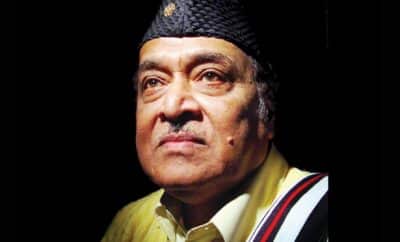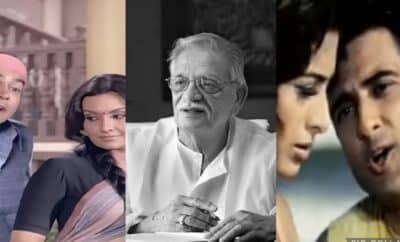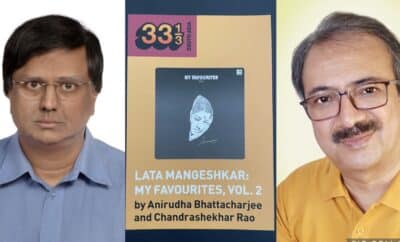Regional Scoop
Geet Ramayan – Ram Janmala Ga Sakhe – Shri Ram Is Born!!
Shri Ram Ram Rameti Rame Rame Manorame
Sahasrenama tattulyam, Rama Nama Varanane
Meaning – By reciting and meditating on the name of Ram (Ram Ram Rameti) my mind gets completely absorbed, engaged in the divine presence of Ram, in the awareness of Ram, which is sublime, transcendental. Reciting his name alone is as good as chanting thousand names of Vishnu (Vishnu Sahasranaam).
Shri Ram, an incarnation of Vishnu, the one who is consciousness bliss, measureless, took birth at his own will to establish morality and virtues and to protect his devotees from the demons. Peerless and gentle. Free from malice, Shri Ram never used any harsh words against the people who tried to provoke him. But always practiced righteousness, fought for it and cultivated it. Shri Ram is worshipped for his gracefulness. For the way he conducted his life at the most difficult moments. He did not hesitate from his truthfulness even at the most testing times of his life. Shri Ram is thus sought by the people who seek gracefulness and liberation in life. Conducting oneself through the disasters in a dignified way.
Ram Navami (Shri Ram’s birthday) falls on the 9th day of the bright fortnight of the Hindu month of Chaitra (March/April). A festival of great importance for the people of Hindu religion. It signifies the protection of righteousness and purification of soul. Inculcating Shri Ram’s ideals in us and saturating the gracefulness within us. The festival is celebrated throughout the country with great fervour. People singing praises of their beloved God Ram. Singing bhajans, recitals, chants, poems, stories, plays – all depicted episodes from his life. Geet Ramayan in Marathi is one such collection of 56 songs which chronologically depict the episodes from Ramayan. A milestone in Marathi music, Geet Ramayan was broadcast on All India Radio (AIR), Pune in 1955-56 for the first time. Since then it has acquired a cult status. There might be hardly a Marathi home which hasn’t or doesn’t play Geet Ramayan during Shri Ram navratri or even otherwise. Each of the 56 songs are composed in different Raag. The essence and various moods range from human weakness to divinity. Geet Ramayan was written by the well known Marathi poet-lyricist G.D. Madgulkar (Ga.Di.Ma) and composed and sung by Sudhir Phadke (Babuji). The work can easily be called as the crescendo of their careers. Based on Valmiki Ramayan, the episodes are narrated in a different format. Showcasing 32 various characters from the epic, Geet Ramayan is narrated by Shri Ram’s sons – Lav and Kush. The song describing the birth of Shri Ram is 6th in the chronological order.
The song begins with a meditative tanpura followed by a commentary of few lines by Sudhir Phadke –
Prasavteel tya tinhi devi
Shri Vishunche ansh maanavi
Dhanya Dasharatha tula laabhla
Dev pityacha maan…
Your queens will give birth to human embodiments of Shri Vishnu, O blessed Dasharatha you are an honoured one to be called as Father of God!!
For so many years the prosperous kingdom of Ayodhya was waiting for this moment, which has arrived now.
Chaitra maas tyaat shuddha navami hi tithee
Gandhayukta tarihi waat ushna hey kiti
Don prahari ka ga shiri surya thaambla
Ram janmala ga sakhe…
It is the auspicious month of Chaitra, the 9th day. The air around though fragrant is still so warm. It is noon, with the sun at its highest point. It is as if the sun was also awaiting this moment. Why is even the sun standing still? That’s because Shri Ram is born!!
The song begins to the thumpings of dhol, tasha accompanied by shehnai and tutari. It also seasoned with flute and the violin (played by Prabhakar Jog). It has got 8 stanzas describing the atmosphere around when Shri Ram was born. Not only people of Ayodhya but the entire universe was celebrating his birth. The animals, the trees, flowers, buds everyone and everything around was ecstatic. The excitement, the joy, the feelings reached a euphoric state.
Kausalya raani halu ughadi lochane
Dipun jaay maay swatah putra darshane
Oghalale aansu, sukhe kantha daatala
Ram janmala ga sakhe….
Kausalya opened her eyes to have a look at her newborn son. Feeling contented tears flowed from her eyes, her heart overflowed with happiness and compassion.
Rajgruhi yeyi navi soukhya parvani
Panhaun hambarlya dhenu angani
Dundubhi cha naad to dhund kondala
Ram janmala ga sakhe….
The palace calls for a celebration of the newborn. The cows mooing in the shed had their udder full with maternal tenderness. The air around was filled with the beats of dundubhi (ancient drums).
Pengulalya aat paant jaagtya kalya
Kaay kaay karit punha umalalya khulya
Uchchrave vayu tyaas hasun bolala
Ram janmala ga sakhe….
The buds which were almost sleepy because of the noon sun, were instantly awake to the atmosphere, they bloomed to ask what the matter was!! And it was the breeze which told them in a loud happy voice….Shri Ram is born!!
Vaarta hi sukhad jadhin pochali jani
Gehatun raajpathi dhaavle kuni
Yuvatincha sangha kuni gaat chaalala
Ram janmala ga sakhe….
When this news reached the people of Ayodhya, people ran from their houses towards the palace. Young maids sang songs throughout…..hailing the birth of Shri Ram.
Pushpanjali feki kuni, koni bhooshane
Haasyane lopavile shabda, bhaashane
Waadyancha taal maatra jalad waadhala
Ram janmala ga sakhe…
Some threw flowers, some tossed their jewellery. People became speechless with happiness. But the instruments were played with all fervor and noise.
Veenarav nupuraat paar lopale
Karnyache kanth tyaat adhik taaple
Baawarlya aamrashiri mook kokila
Ram janmala ga sakhe…
With so much music around, the veena strums got gelled with tinkling of the ghungroos. People were getting accustomed to the celebration around. The cuckoo birds sitting atop the mango tree were bewildered with the much festivities.
Diggajahi aaj zara halun paahti
Gaganatun aaj nave rang pohti
Motynacha choor nabhi bharun raahila
Ram janmala ga sakhe….
The diggaj (8 elephants which support the earth according to Hindu mythology) also want to have a look at the newborn. The sky is bursting with new colours. It is as if the pearls are filling up the skies.
Buduni jaay nagar sarva nrutya gaayani
Sur, rang, taal yaat magna medini
Dolatase tihi zara Shesh dolala
Ram janmala ga sakhe…..
The entire town is submerged in the festivities with dance and music. The Earth herself has indulged in the music, colours and celebration. She’s swaying with happiness and so is the Shesh (thousand headed serpent in Hindu mythology).
Composed in Raag Mishr Maand, the song is an epitome of celebration. Mishr Maand belongs to Rajasthan folk genre. It is generally sung at births, marriages etc. The song was has 2 versions – one which was recorded in Sudhir Phadke’s voice and the other (original) which was broadcast on AIR in the voice of Suman Matey, Janaki Iyer and Kalindi Keskar.
(Sorry for the bad audio quality)
The date of broadcasting of this song was 6th April 1955 and 64 years down the lane it still is as fresh as it was then. Music lovers and the devotees will forever be indebted to these 2 geniuses – Sudhir Phadke and G.D. Madgulkar. With this creation they have made us experience the euphoria, the celebration of the birth of Shri Ram!!




Ajay
July 25, 2019 at 10:44 am
Excellent Write-up for very talented Singer / Music Director. “Geet Ramayan” remains immortal creation
Deepa
July 25, 2019 at 11:06 am
Thank you so much ? yes, it is an immortal work of both the geniuses!!
Arjun Narayanan
April 21, 2021 at 4:02 pm
I chanced upon Geet Ramayan only two years back and have loved listening to it, even though I do not follow Marathi. Some day, please do write about how this work came to be recorded. There must be an interesting story behind that I guess
Deepa
May 7, 2021 at 12:10 pm
Thank you Arjun. I’ll try and write about it some day ?